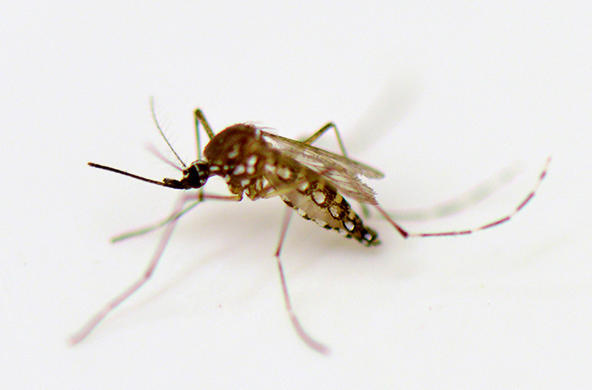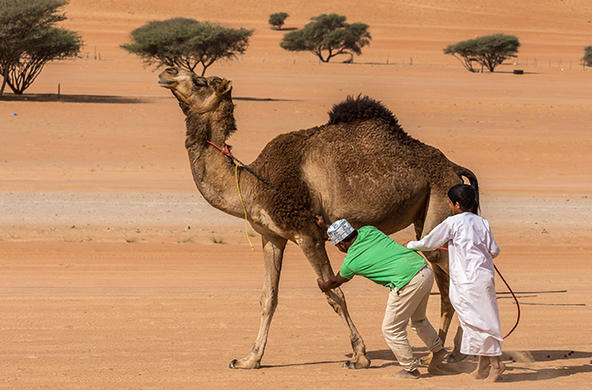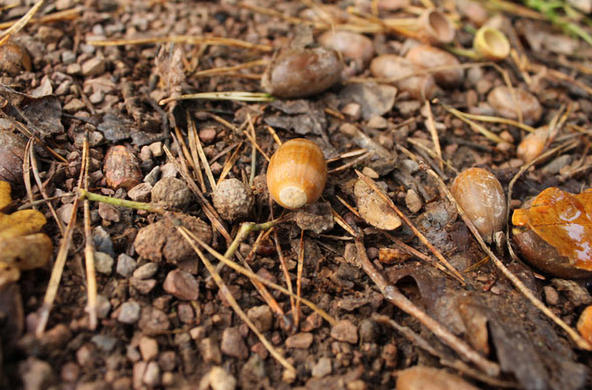On Wednesday, a group of scientists gathered—virtually, of course—to share their research on a video call. At this point in the Covid-19 pandemic, that was utterly normal. What was not at at all normal: The group was launching an international network to detect pathogens that can jump from wildlife to the human population, a field of inquiry that’s become politicized since the coronavirus pandemic began—and they were doing it with federal money, even though the United States government has been the source of the politicization.
The network, known as CREID (for Centers for Research in Emerging Infectious Diseases), was announced three weeks ago by the National Institute for Allergy and Infectious Diseases within the National Institutes of Health. The NIH is investing $17 million this year and $82 million across five years to create 11 research nodes, mostly at US universities, that will spin up research partnerships in 28 other countries—including China, where the current pandemic began.
It’s an odd investment, maybe even a quiet about-face, for an administration that has spent the past nine months casting doubt on the coronavirus’s origins and demonizing the country where people were first affected, variously alleging malign secrecy, lab sloppiness, and malicious intent. Scientists who will be heading the centers are trying not to look too hard at that paradox, choosing instead to focus on the network’s promise: If all goes well, this could establish a worldwide surveillance structure that detects the next pandemic pathogen before it leaps into humans from the wild world.
That would be a good thing. As far back as the first international epidemic of a novel coronavirus, SARS, in 2003, every spillover of a pathogen from wildlife to humans—including the H1N1 avian flu epidemic in 2009, MERS in 2012, Ebola in West Africa in 2014, and Zika in South America in 2016— has come as a surprise. This network could break that pattern.
“We’ve all learned the hard way that every time there is an emergence, that triggers some sort of disorganized scramble,” says Nikos Vasilakis, a professor of pathology at the University of Texas Medical Branch (UTMB) in Galveston, who will lead one of the new centers. “This gives us the possibility of a coordinated response, a chance to create a strategically and geographically dispersed network of sites that would be able to forewarn of any disease emergence, whatever that emergence is.”
There are 11 centers—10 research nodes and an operational and data hub at Duke University, up from an originally envisioned three—in order to cover the breadth of the science needed to to detect, identify, understand, and potentially control pathogens in the process of leaping to humans. That requires working in multiple disciplines to understand how a pathogen lives in a host animal, what features allow it to cause infection in people, how human immune systems respond, and what tests and treatments might be developed to detect and block deadly organisms.
It also requires putting research capacity in multiple locations, from the fringes of human settlement where hunters and farmers may be exposed to novel pathogens, to villages where human-to-human transmission begins, and to urban areas where adapted pathogens can find enough hosts to cause explosive outbreaks. Working in that manner requires local collaborators. Having those collaborators also grounds the work in other countries, keeping the research from being extractive and guaranteeing that it will benefit economically developing nations where viruses spill over as much as it will industrialized ones where viruses might spread.
Vasilakis’ research center has been dubbed Create-Neo, which is short for Coordinating Research on Emerging Arboviral Threats Encompassing the Neotropics. (Many of the new centers have amazingly elaborate acronyms.) It will focus on viruses in Central and South America that are carried by mosquitoes and ticks; they include major killers such as yellow fever and Zika. The center grew out of past work that Vasilakis and his colleagues, including his wife Shannan Rossi, an associate professor at UTMB, were doing in Brazil, detecting exposures of monkeys and humans to viruses carried by forest mosquitoes, and detecting how the mosquito populations moved and carried viruses with them.
To do their new work within CREID, they recruited a slate of partners: three institutes in Panama and Brazil, and in the United States, MIT and the Cary Institute of Ecosystem Studies in New York State. The co-principal investigator, Katherine Hanley, is a professor of virus evolutionary ecology at New Mexico State University.
That geographic reach is typical of the new project, in which 10 US grant recipients and one in Paris are forming their own mini-networks internationally. For instance, Washington State University’s Center for Research in Emerging Infectious Diseases – East and Central Africa (CREID-ECA) is collaborating with Emory University in Atlanta and with institutes in Germany, Belgium, Kenya, Uganda, Tanzania, and the Democratic Republic of the Congo. University of Washington’s United World Antiviral Research Network (the acronym is, yes, UWARN) is working with universities in Brazil, Senegal, South Africa, Pakistan and Taipei.
It’s interesting to see the US administration make this investment, given that the Trump White House has to this point been uninterested in pandemic planning or international cooperation. Consider that last year, the White House made personnel changes that led to dissolution of the National Security Council’s “pandemic unit,” formally the Directorate for Global Health Security and Biodefense. And last fall the administration ended future funding for a pioneering project called Predict that detected viruses at the human-wild interface, which the US Agency for International Development had supported for 10 years. (In March, USAID gave Predict an emergency six-month extension, which is now set to expire this month.)
Plus, throughout the pandemic, the administration has tried to blame China for the coronavirus as leverage in its ongoing trade war, at various points claiming the pathogen was either manufactured there or occurred naturally but escaped in a lab accident. President Donald Trump constantly uses the phrase “China virus,” and only two weeks ago, the Republican governor of Mississippi insisted, first in a Facebook post and then on Twitter, that the virus was not naturally occurring, writing: “The Chinese Communist Party needs to own the fact they unleashed this virus and lied about it.”
Just one of the new centers will be doing work in China. The Center for Research in Emerging Infectious Disease – Epidemiology, Surveillance, Pathogenesis (CREID-ESP) at Washington University in St. Louis plans to partner with the University of Hong Kong and the China CDC, as well as institutes in California, Ethiopia, and Nepal. Most of their work will be on coronaviruses, with an additional focus on whatever viruses underlie unexplained respiratory diseases, according to principal investigator David Wang, a professor of pathology and immunology.
It’s a familiar landscape for him: He was one of the identifiers of the original SARS virus in 2003. Working in viral characterization since then, and watching the emergence of MERS and the virus behind Covid-19, gives him an acute sense of where surveillance and pandemic prediction falls short—something the new network might remedy.
“We learned almost nothing from SARS,” he says. “It showed us that you need strong public health infrastructure and you have to be prepared for the possibility of rapid dissemination. But we’ve never invested sufficiently in public health, because public health is prevention—and when it works really well, nothing happens.”
Earlier this year, one of the new network’s members ran aground on questions of government investment. In April, the NIH took a five-year, $3.7 million grant to study bat coronaviruses away from a small New York nonprofit, the EcoHealth Alliance, which had been part of Predict, apparently because it was collaborating with the Wuhan Institution of Virology. The cancellation was never fully explained by NIH—emails reviewed by the journal Science showed that an NIH official made unspecified allegations about lab precautions—but it came a week after President Trump learned of the project during a press conference and promised to “end that grant very quickly.”
At that point, the grant had already been renewed for a second term and had shown its utility: Coronaviruses found by the joint project were used to test the efficacy of the Covid-19 treatment remdesivir. The cancellation infuriated the scientific community. Thirty-one scientific societies, comprising several hundred thousand scientists, signed a joint protest letter; so did 77 Nobel laureates. In August, the NIH restored the grant—but immediately suspended it again, telling EcoHealth that it could only have the money back if it performed impossible tasks such as turning over the Wuhan lab’s records and accounting for traffic movement around the institute.
Those conditions, like the original suspension, were widely taken to be political, pressuring the organization to sacrifice Chinese collaborators to please the White House. So it is surprising, to say the least, that EcoHealth was chosen to be one of the research centers in the new network. Even stranger, it was chosen based on an application last year. That is to say, it was being evaluated for this grant at the same time NIH officials were taking away its other one.
Regardless of the maneuvering, EcoHealth now heads a project within CREID that it calls the Emerging Infectious Diseases: South East Asia Research Collaboration Hub (boasting the excellent acronym EID-SEARCH). The name may hint at how NIAID, the source of the new grants and headed by Tony Fauci, routed around the controversy. The EcoHealth Alliance won’t be working in China; its projects are in Malaysia, Singapore, and Thailand.
“We didn’t apply to work in China,” says Peter Dazsak, the group’s executive director. “Of course, at the time we applied to be part of this, we were still working there. But what we felt was important was to look at Southeast Asia, because it’s the regional hub for zoonotic pathogens: Nipah virus, avian flu repeatedly, coronaviruses, even evidence of Ebola-like viruses.”
The point isn’t only to do the surveillance that identifies viruses in animals as they come close to the human realm. It is also to develop tests that allow them to identify exposed humans and then tease out the behaviors that allowed those people to be exposed. “We want to ask communities, ‘Do you eat wildlife? Do you catch it? If you don’t catch it, who sells it? How much do you pay for it?’” Daszak says. “We want to identify the incentives for people to put themselves at risk, and therefore, figure out what we can do to bring in behavior change to reduce that risk.”
The goal, he says, is to locate the new research at the point where prevention and response meet: anticipating where pathogens spill over into humans in time to stop them, or uncovering the first cases in humans before they can spread. “Our current strategy for combating pandemics is what it was a century ago: Expect a pandemic to emerge and hope we can contain it,” he says. “We can’t afford to do that again. This is a far-sighted way of doing it differently.”
University of Texas Medical Branch (CREATE-NEO)
Consortium Name: Coordinating Research on Emerging Arboviral Threats Encompassing the Neotropics (CREATE-NEO)
Pathogen Focus: Chikungunya Virus, Dengue Virus, Mayaro Virus, Yellow Fever Virus, and Zika Virus
The Coordinating Research on Emerging Arboviral Threats Encompassing the Neotropics (CREATE-NEO) project will combine arbovirus surveillance across Central and South America with predictive modeling efforts to better anticipate and counter arbovirus emergence. CREATE-NEO will forewarn local, regional, and global public health agencies of arboviruses within Central and South America that pose particularly high risk of spillover, emergence into transmission among humans, and/or international spread. CREATE-NEO will also build local capacity to detect, predict, and respond to emerging arboviruses at their point of origin, which will maximize the potential to avoid full-blown viral emergence. Importantly, CREATE-NEO can quickly redirect to address any emerging animal to human or biological vector-borne disease.
This Research Center is supported by the National Institute Of Allergy And Infectious Diseases of the National Institutes of Health under Award Number U01AI151807





